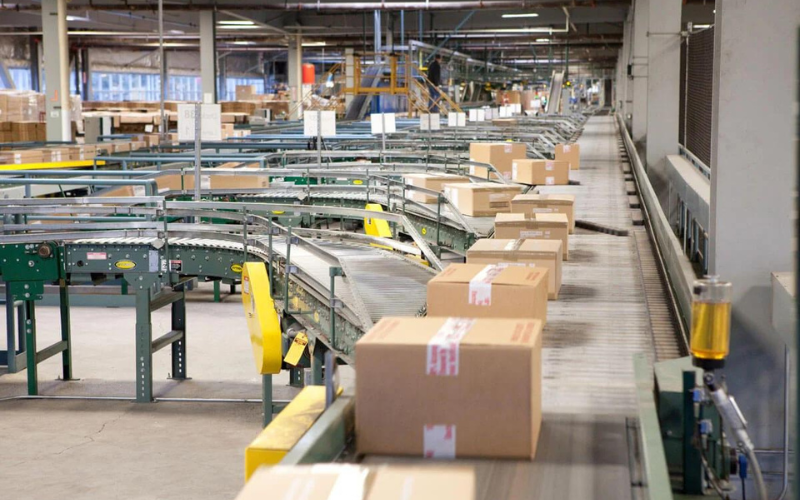
Condition-Based Monitoring for Conveyors Systems
Across industries, executives and leaders are always on the search for ways to boost ROI and limit downtime. If conveyor systems play a critical role in your operation, optimizing the management of these key assets can play an important role in enhancing overall efficiency. In this article, we’ll examine the benefits of condition-based monitoring (CbM) for conveyor systems and how current technology can help prevent downtime, extend asset life, and optimize maintenance scheduling.
Is your current asset reliability plan enough?
You probably have an asset reliability plan that includes a regular maintenance routine. While this has been considered a best practice in the past, it falls short of the precision that CbM offers. Technological advances now allow companies to get real-time insight into asset performance, so emerging problems won’t go unnoticed until the next scheduled preventive maintenance. Infrared cameras paired with specific AI algorithms can detect conveyor problems like overheating, overloading, abnormal friction, overtightened or misaligned belts, and improper maintenance. Detecting and addressing these problems early saves time and money while protecting worker safety.
How much does downtime cost your company?
Downtime undermines your bottom line. Every minute of halted production affects revenues and productivity. A 2006 survey of auto industry manufacturers, including parts suppliers as well as auto makers, found that downtime cost these companies an average of $22,000 per minute; that’s equivalent to more than $34,000 in buying power in 2023. While downtime costs vary across industries, its’ often more expensive than leaders think.
Companies generally recognize obvious costs of downtime like lost production capacity, wasted materials, diverted labor, and additional maintenance costs. Often, however, other costs such as back-office labor, utilities, lost sales opportunities, and damaged customer relations are overlooked. Whatever your company’s actual cost of downtime, preventing it is an important part of running an efficient operation and maximizing ROI.
Benefits of Condition-Based Monitoring
Condition-based monitoring is a proactive strategy that uses sensors and data analytics to monitor conveyor systems and components such as bearings, motors, and belts. By continuously collecting and analyzing data, CbM systems can detect early signs of degradation, extending the lifetime value of the conveyor system and allowing maintenance personnel to address issues before they escalate into breakdowns and result in downtime.
Addressing equipment issues as soon as possible has many benefits. Some of the most important include
- Downtime prevention
- Enhanced asset reliability
- Extended equipment life
- Reduced maintenance costs (including parts, labor, shipping, and the back-office time it takes to arrange emergency maintenance)
- Enhanced worker safety
How do condition-based monitoring systems work?
Many factors can trigger failures in conveyor belt systems. The belt may be overloaded or misaligned, maintenance may have been performed incorrectly, or components could succumb to wear and tear. Regularly scheduled maintenance can catch some of these problems, but even with preventive maintenance, manufacturers, logistics operations, and other businesses that rely on conveyors still experience breakdowns and downtime.
Continuous, Real-Time Data & Analytics
CbM provides a window into the performance of conveyor equipment and its critical components, empowering companies to reduce operational disruptions, prevent downtime, optimize materials use and energy consumption, and boost efficiency and overall equipment effectiveness. Advanced infrared imaging and sensing technology, integrated with software that continuously monitors and analyzes equipment data, can provide real-time insights into performance and even use artificial intelligence to predict issues before they arise.
More Precise Maintenance
A CbM system establishes a baseline thermal profile of equipment so it can quickly identify temperature anomalies. In conveyor belt systems, abnormal temperatures can signal problems like friction, blockage, and overheating. By employing a CbM system that continuously monitors equipment temperatures and automatically delivers alerts and notifications to key employees, operations can address these issues promptly, potentially preventing downtime and materials waste as well as fire and other hazards. Additionally, maintenance can be scheduled based on the actual condition of equipment rather than at predetermined intervals, optimizing the maintenance budget and use of employee time.
Industry Applications
Various industries that rely on conveyor belt systems can benefit from AI-enabled CbM. For example,
- Manufacturers can monitor equipment status in real time, receive temperature pattern analysis reports, detect hot spots, trigger alerts, and build a predictive maintenance plan to ensure conveyor belt systems are reliable and safe.
- Logistics and distribution businesses can use CbM to optimize product flow as well as manage maintenance to reduce disruptions to operations.
- CbM can reduce the risk of fire in paper mills by automatically sending instant alerts when temperatures fall outside of normal operating parameters as well as developing a proactive predictive maintenance strategy.
MSAI Cloud Condition Monitoring
MSAI Cloud uses advanced thermal imaging technology and AI-enabled software to enhance asset reliability. Providing customizable dashboards and analytics, remote video monitoring, automatic alerts, and seamless integration with VMS and DCS platforms, MSAI Cloud empowers business leaders to improve ROI, operational efficiency, and worker safety. MultiSensor AI, the maker of MSAI Cloud, has been a trusted thermography innovator since 1995. Our mission is to develop and manufacture the most sensitive, accurate, and competitively priced infrared cameras in the world.


-1.png?width=1200&height=1200&name=UK%20Condition%20Monitoring%20(Blog%20Post)-1.png)